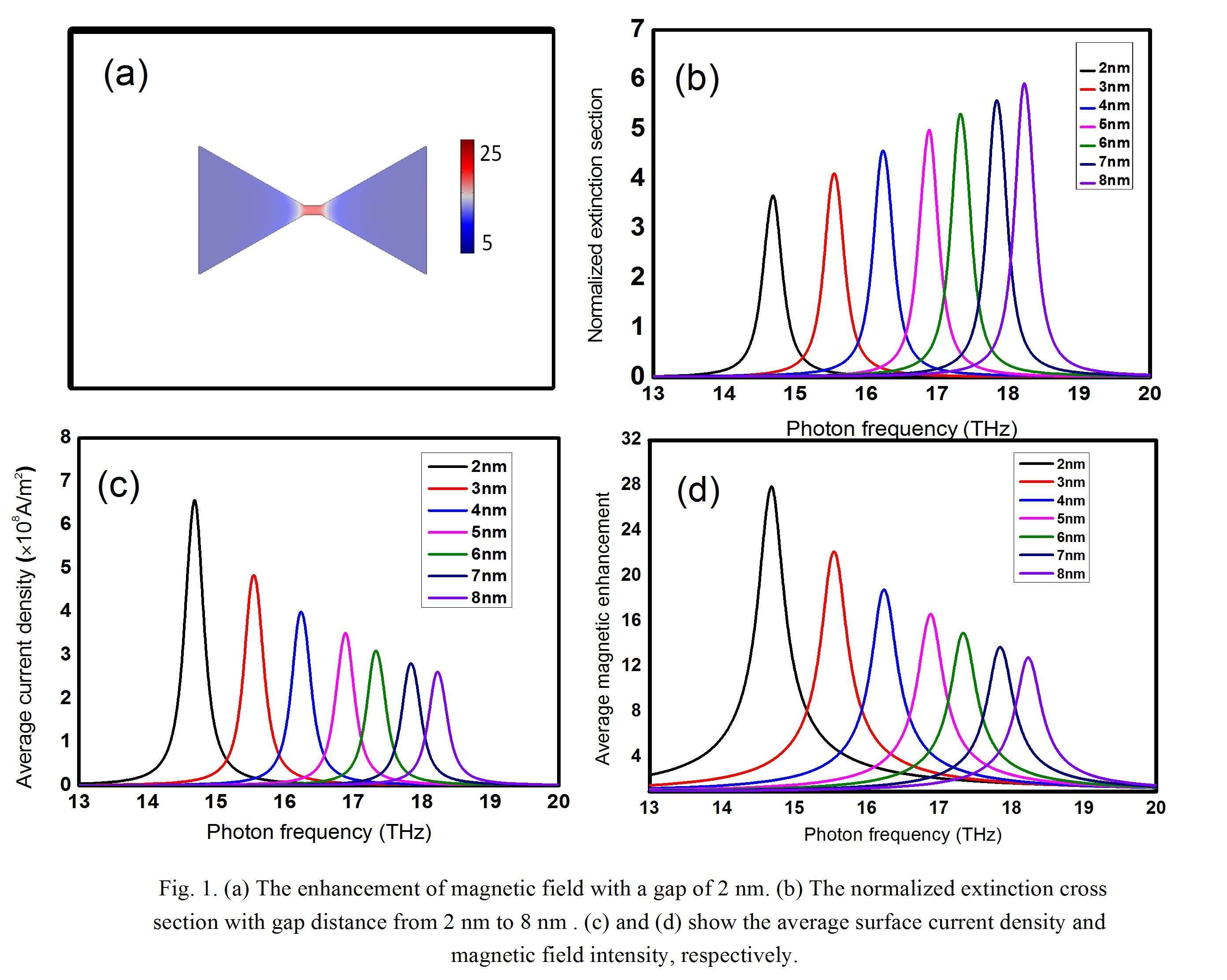
Magnetic Field Enhancement in Graphene Diabolo Nanoantenna with and without Nonlocal Effect
Graphene is made of carbon atoms arranged on a hexagons honeycomb structure [1], whose pristine form is a semimetal, but with appropriate doping it is emerging as a promising plasmonic material as well. Compared with surface plasmons in metal, graphene plasmons provide a conveniently tunable platform for strong light-matter interactions, much due to their enormous confinement and relatively long propagation length [2]. In this work, we study the plasmonic properties of graphene diabolo nanoantennas (GDAs) [3], the complemental structures of bowtie aperture antenna according to Babinet’s principle. We discuss the enhancement and localization of magnetic field of GDA in mid-infrared frequency range by using the finite element method. Simulation results indicate that a smaller gap induces larger magnetic field enhancement. Specifically, a positive correlation between the polarization current density of the electric field and magnetic field intensity is obtained in local approximation, which agrees well with Ampere’s rule. In further, the magnetic field enhancement effect is calculated and compared with the nonlocal effect of graphene. What is worth mentioning is that our results present another efficient way, compare to using traditional ferromagnetic materials, to concentrate and enhance magnetic fields.

[1] Novoselov, K. S. et al. Science306,666–-669(2004).
[2] Koppens, F. H. L. et al. Nano Lett. 11, 3370 (2011)
[3] Grosjean, T. et al. Nano Lett. 11, 1009 (2011)
zenghongma0520@gmail.com
Powered by Eventact EMS